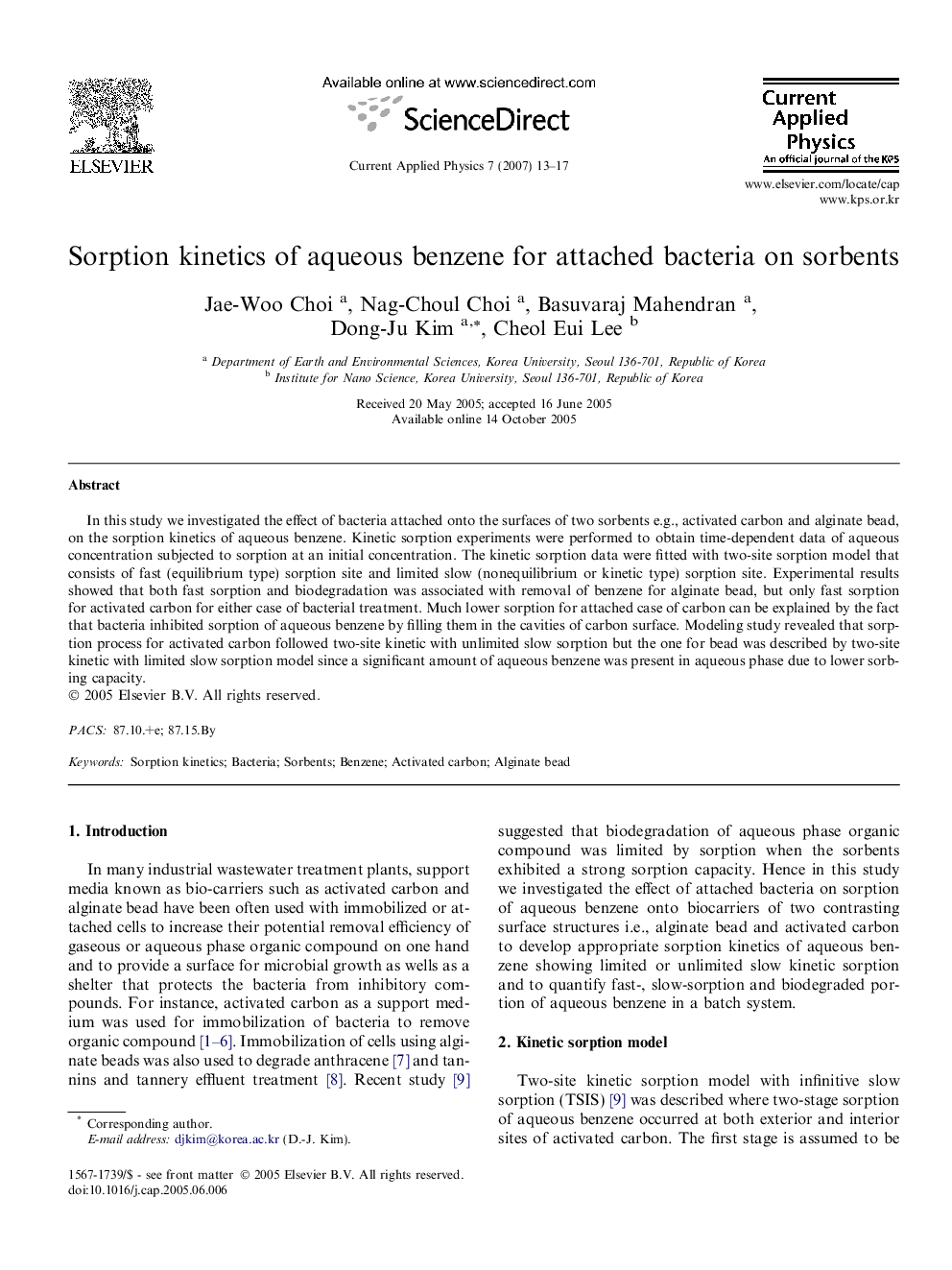| Article ID | Journal | Published Year | Pages | File Type |
|---|---|---|---|---|
| 1789107 | Current Applied Physics | 2007 | 5 Pages |
In this study we investigated the effect of bacteria attached onto the surfaces of two sorbents e.g., activated carbon and alginate bead, on the sorption kinetics of aqueous benzene. Kinetic sorption experiments were performed to obtain time-dependent data of aqueous concentration subjected to sorption at an initial concentration. The kinetic sorption data were fitted with two-site sorption model that consists of fast (equilibrium type) sorption site and limited slow (nonequilibrium or kinetic type) sorption site. Experimental results showed that both fast sorption and biodegradation was associated with removal of benzene for alginate bead, but only fast sorption for activated carbon for either case of bacterial treatment. Much lower sorption for attached case of carbon can be explained by the fact that bacteria inhibited sorption of aqueous benzene by filling them in the cavities of carbon surface. Modeling study revealed that sorption process for activated carbon followed two-site kinetic with unlimited slow sorption but the one for bead was described by two-site kinetic with limited slow sorption model since a significant amount of aqueous benzene was present in aqueous phase due to lower sorbing capacity.
